Jean Paul Gaultier's brand history unfolds from its inception, shaped by a commitment to craftsmanship and innovation in fashion. Despite having no formal training, Gaultier launched his prêt-à-porter label in 1976 after apprenticing with Pierre Cardin at the age of 18. The brand quickly became known for its groundbreaking designs, such as corsetry as outerwear and the iconic "Cone Bra," which challenged traditional fashion norms. Gaultier's collaborations with pop culture and his daring, avant-garde designs reflect a dedication to inclusivity and gender fluidity, solidifying the brand's status as a cultural icon. Although Gaultier announced his retirement in 2020, the legacy of his brand and its creative spirit continues to profoundly influence the fashion landscape. Explore the journey of Jean Paul Gaultier to appreciate the nuances of its impact on the industry.
Early Life and Influences
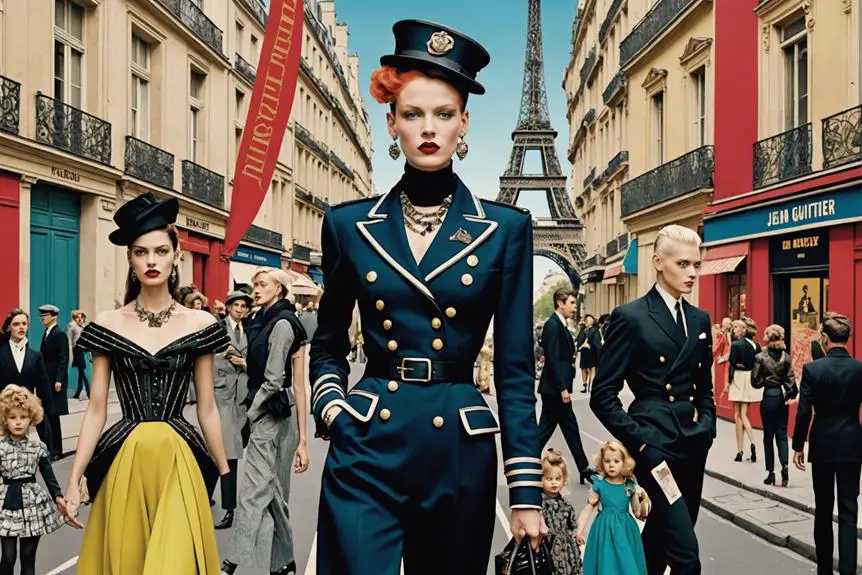
Jean Paul Gaultier's journey into the world of fashion is deeply rooted in his early life and the influences that shaped his creative vision. Born on April 24, 1952, in Arcueil, France, Gaultier's middle-class upbringing provided him with a stable foundation, yet it was his maternal grandmother, Marie Garrabe, a skilled seamstress, who ignited his passion for design. This familial connection introduced him to the nuances of haute couture at a young age, fostering his burgeoning creativity.
Without formal training, Gaultier took a bold step by sending sketches to established couture stylists, showcasing his determination and innate talent. His apprenticeship with Pierre Cardin at just 18 years old marked a significant turning point, allowing him to learn from a master while developing his unique aesthetic. Collaborating with notable designers like Jacques Esterel and Jean Patou further honed his skills, as he absorbed various cultural influences and fashion movements.
Career Beginnings
At just 18 years old, Gaultier commenced his professional journey in the fashion world, taking on the role of studio assistant for the renowned designer Pierre Cardin. This position marked a critical entry point into the industry, where he absorbed invaluable insights from one of the leading fashion designers of his time. Gaultier's early experiences under Cardin's mentorship ignited his passion for haute couture and innovative designs.
By 1976, he launched his first prêt-à-porter label, immediately gaining attention for his creativity far beyond conventional fashion norms. His first runway show at the Palais de la Découverte in Paris showcased not only his unique vision but also his ability to challenge and redefine fashion boundaries.
The table below highlights key milestones in Gaultier's early career:
| Year | Milestone | Significance |
|---|---|---|
| 1970 | Joined Pierre Cardin | Gained insights from a leading designer |
| 1976 | Launched first collection | Introduced innovative styles to the market |
| 1981 | Established Société Jean Paul Gaultier | Set the stage for future expansion |
Through these formative years, Jean Paul Gaultier laid the groundwork for a groundbreaking career in fashion.
Establishment of the Brand
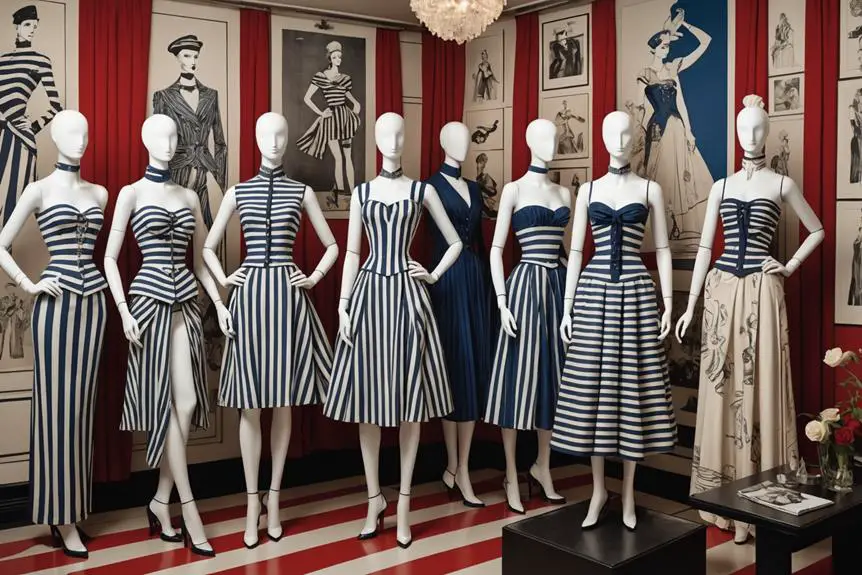
Building on the foundation laid during his early career, Gaultier's establishment of his brand marked a transformative era in fashion. In 1976, he launched his prêt-à-porter label with partner Francis Menuge, quickly capturing attention with his innovative designs that challenged conventional norms. His first runway show at the Palais de la Découverte in Paris was pivotal, showcasing his unique vision and solidifying his status as a designer to watch.
By 1981, he founded the Sociétés Jean Paul Gaultier, which facilitated new manufacturing partnerships and propelled brand development. This strategic move allowed Gaultier to expand his creative horizons and reach a broader audience. In 1983, he introduced the first corset-style dresses, a defining moment that not only set a new trend but also became synonymous with his brand's aesthetic.
The opening of his first boutique in 1986 further enhanced the visibility and accessibility of his distinctive fashion offerings. This establishment of the brand laid the groundwork for Gaultier's future innovations, firmly positioning him as a visionary in the fashion industry. His ability to blend artistry with commercial appeal set a precedent for future designers.
Innovations in Fashion
Through a lens of innovation, Jean Paul Gaultier has consistently redefined the landscape of contemporary fashion. His approach intertwines boldness with creativity, transforming staples into avant-garde statements. Gaultier popularized corsetry as outerwear, a move that revolutionized how we perceive structure in clothing. Additionally, his 1985 "And God Created Man" collection introduced androgynous fashion, challenging rigid gender norms.
His designs, often crafted from unconventional materials like denim and latex, showcase a fearless exploration of fabric. The iconic "Cone Bra," famously worn by Madonna in 1990, epitomizes Gaultier's ability to blend pop culture with haute couture. This piece became synonymous with daring, recontextualizing lingerie as fashion.
Here's a quick look at Gaultier's innovations:
| Innovation | Description |
|---|---|
| Corsetry as Outerwear | Redefined traditional garment structure |
| Androgynous Fashion | Challenged gender norms with men's skirts |
| Cone Bra | Revolutionized lingerie into fashion icon |
| Unconventional Materials | Utilized denim and latex in high fashion |
| Haute Couture | Blended cultural influences and techniques |
In essence, Gaultier's work embodies a relentless commitment to innovation and creativity, setting him apart in the fashion industry.
Iconic Collaborations
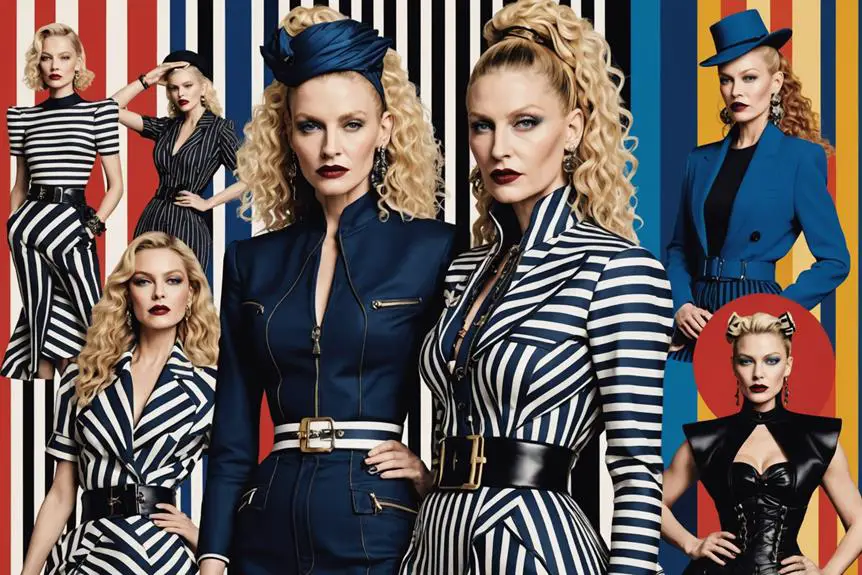
Frequently pushing the boundaries of fashion, Jean Paul Gaultier's collaborations with iconic artists have played a pivotal role in shaping both his career and the broader cultural landscape. His work exemplifies how avant-garde fashion can intersect with music, film, and luxury branding, creating a unique style that resonates with cultural trends.
- Designing Madonna's costumes for the 1990 Blond Ambition World Tour, including the unforgettable cone bra, Gaultier solidified his reputation for provocative fashion.
- His memorable stage outfits for artists like Björk and Kylie Minogue blended fashion and performance art, enhancing their artistic personas.
- Serving as creative director at Hermès from 2003 to 2010, he infused his unique style into the luxury brand, balancing modern fashion with classic heritage.
- In "The Fifth Element" (1997), his innovative costumes showcased a bold use of color and materials, expanding his influence in cinematic fashion.
These iconic collaborations not only underscore Gaultier's artistry but also illustrate his ability to adapt and thrive within the ever-evolving landscape of modern fashion. His work continues to inspire, pushing the envelope of what fashion can achieve.
Fragrance Success
Capturing the essence of Gaultier's avant-garde vision, his foray into the fragrance industry marked a significant evolution in his brand. Launched in 1993, Classique quickly became iconic, blending notes of vanilla, orange blossom, and ginger to create a scent that challenged traditional femininity. This innovation set the stage for Gaultier's subsequent success in the fragrance market.
In 1995, he introduced Le Male, a game-changing men's fragrance characterized by lavender and mint. This bold combination resonated with consumers, ultimately making it the top-selling men's fragrance in the EU by 2012. Gaultier's fragrances showcase not just olfactory creativity but also strategic marketing prowess.
Since 2016, Puig has managed the licensing of Gaultier's fragrance lines, which include Classique, Le Male, and Scandal, ensuring their continued relevance in a competitive market. The brand's innovative marketing strategies, including collaborations with celebrities, have further elevated its visibility and engagement. Each fragrance remains a symbol of Gaultier's commitment to avant-garde aesthetics, marrying bold scents with cutting-edge branding. Through this lens, Gaultier's fragrance success is not just about sales; it's a representation of his enduring influence on the industry.
Cultural Impact
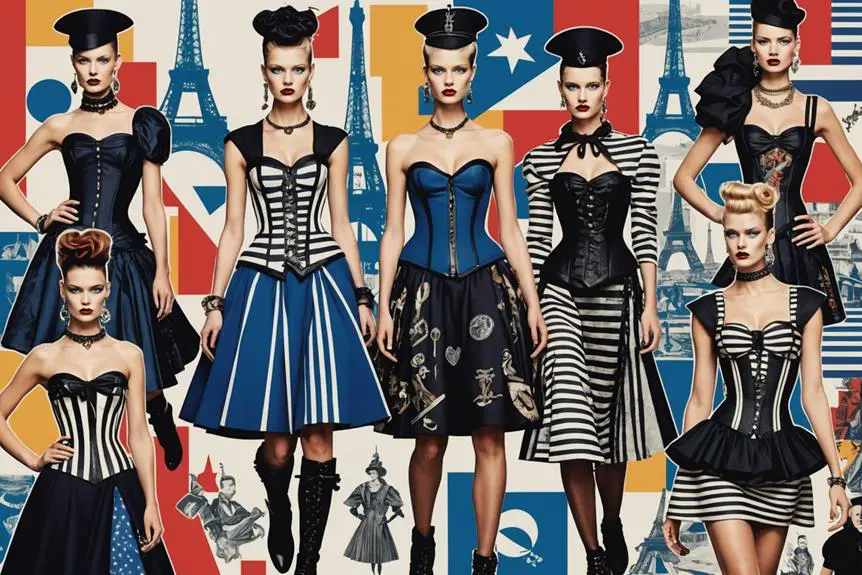
Jean Paul Gaultier's cultural impact extends far beyond the confines of fashion, as he seamlessly intertwines societal issues and diverse narratives into his designs. You can see how Gaultier changed the fashion landscape through his innovative approaches that celebrate cultural diversity and promote inclusivity. His work resonates on multiple levels, as he challenges traditional norms and redefines what fashion can represent.
- Gaultier pioneered the concept of "ready-to-wear" in haute couture, making high fashion more accessible.
- His theatrical runway shows blended fashion with performance art, creating unforgettable experiences that captivated audiences.
- Collaborations with pop culture icons, like Madonna and Kylie Minogue, merged fashion with music, shaping the visual aesthetics of the industry.
- His commitment to LGBTQ+ representation in fashion has inspired a generation of designers to embrace diversity and challenge gender norms.
Retirement and Legacy
For over four decades, Jean Paul Gaultier reshaped the fashion landscape with his audacious designs and groundbreaking ideas. His retirement from runway shows in January 2020 marked the end of an era, yet it didn't diminish his influence. Known as the "enfant terrible" of fashion, Gaultier's legacy is deeply rooted in his provocative designs that defied conventional norms. His innovative contributions to haute couture and ready-to-wear fashion have left an indelible mark, inspiring countless designers and altering the trajectory of modern aesthetics.
Even in retirement, Gaultier remains active through special projects and collaborations, such as his partnership with Supreme. This engagement signifies that his creative spirit continues to thrive, further cementing his status as a pivotal figure in fashion. Gaultier's emphasis on inclusivity and diversity within his work resonates strongly, challenging the industry to embrace broader representations of beauty.
Major exhibitions, like "The Fashion World of Jean Paul Gaultier," celebrate his impactful career, showcasing the breadth of his artistry. Ultimately, Gaultier's legacy is not just about his designs but also about the cultural conversations he sparked, paving the way for a more inclusive fashion future.
Recent Developments
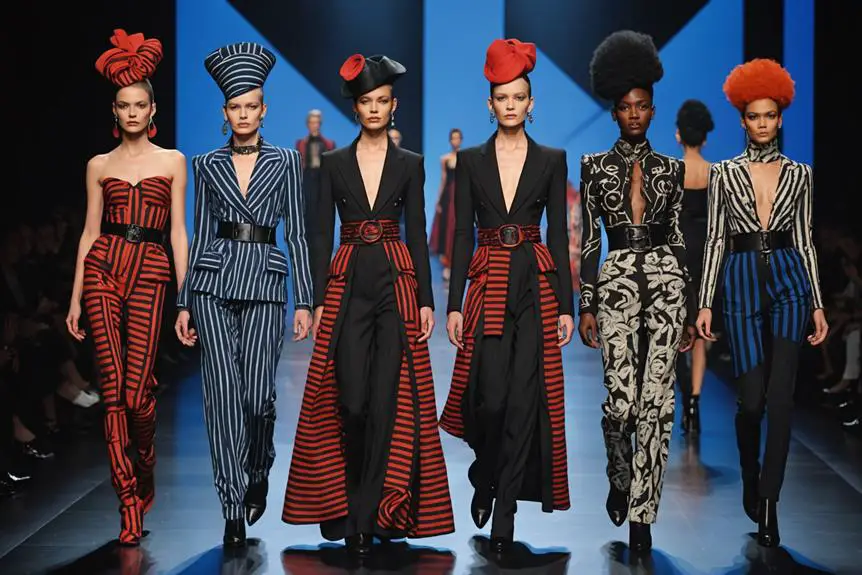
Following Gaultier's retirement from runway shows, his focus has shifted to innovative collaborations and fresh creative endeavors. This change marks a significant chapter in his illustrious career, emphasizing his enduring influence while nurturing the next generation of talent. Here are some recent developments that highlight this shift:
- Gaultier's partnership with Supreme has generated buzz, merging streetwear with haute couture and reaching a broader audience.
- In 2021, he invited new designers to contribute to his collections, fostering innovation and ensuring the brand remains relevant in an ever-evolving fashion landscape.
- He actively participates in television projects, further solidifying his role as a creative director who shapes contemporary fashion narratives.
- Major exhibitions dedicated to Gaultier's work have been held worldwide, showcasing both his legacy and the cultural impact of his designs.
These initiatives not only celebrate Gaultier's extraordinary contributions but also illustrate his commitment to evolution in the fashion industry. By embracing collaborations and exhibitions, he continues to inspire and influence, ensuring that his legacy endures long after his retirement from the runway.
Frequently Asked Questions
What Is the History of Jean Paul Gaultier Brand?
You'll find that Jean Paul Gaultier's brand evolved through innovative designs, theatrical runway shows, and iconic collaborations. His fragrances and flagship boutique further established his influence, reshaping fashion norms and enchanting global audiences.
How Did Jean Paul Gaultier Become Successful?
Jean Paul Gaultier became successful through innovative designs, strategic collaborations with musicians, and launching iconic fragrances. His ability to blend cultural influences and push boundaries in fashion captured attention, establishing his brand as a luxury powerhouse.
Who Manufactures Jean Paul Gaultier?
You'll find that Jean Paul Gaultier's fragrances are manufactured by Puig, while his clothing and haute couture collections are managed by Société Jean Paul Gaultier. Both partnerships emphasize avant-garde aesthetics and innovative marketing strategies.
What Does Jean Paul Gaultier Original Smell Like?
When you experience Jean Paul Gaultier's original fragrance, you'll notice a warm blend of vanilla, orange blossom, and ginger. This sensual combination creates an inviting aura that captivates and leaves a lasting impression.
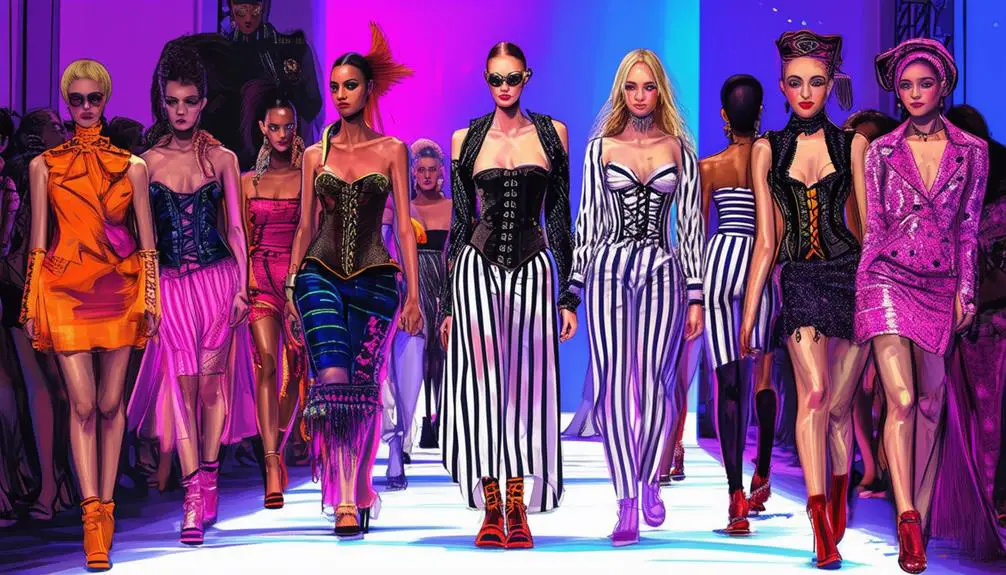



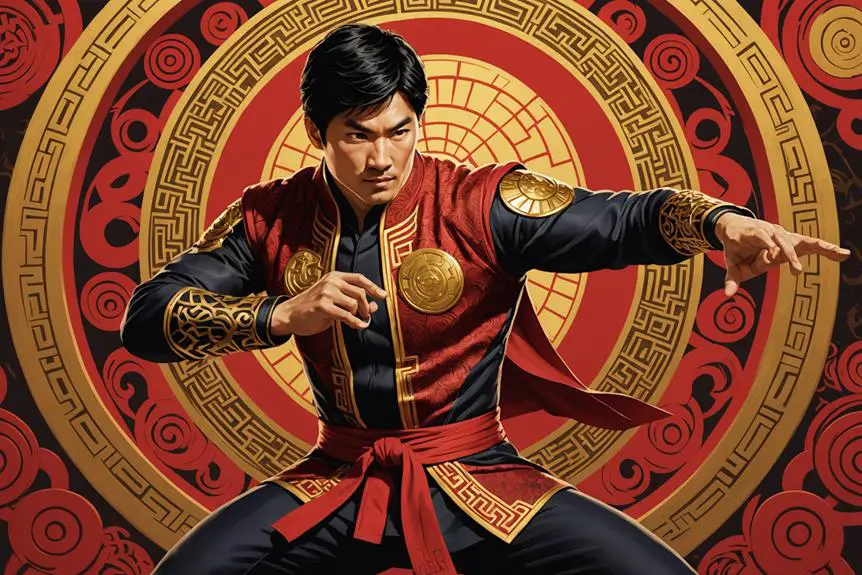
I don’t think the title of your article matches the content lol. Just kidding, mainly because I had some doubts after reading the article.
Thanks for one’s marvelous posting! I really enjoyed reading it, you could be a
great author.I will ensure that I bookmark your blog and
will eventually come back someday. I want to encourage you
continue your great job, have a nice afternoon!
meilleur casino en ligne
Generally I do not learn post on blogs, however I wish to say that
this write-up very forced me to check out and do so! Your writing style has been amazed me.
Thanks, quite great article.
casino en ligne francais
I do consider all of the ideas you have presented to your post.
They’re very convincing and can definitely work. Still, the posts are very
quick for starters. May you please extend them a bit from subsequent time?
Thank you for the post.
casino en ligne
Usually I don’t learn article on blogs, however I would like
to say that this write-up very forced me to try and do it!
Your writing style has been amazed me. Thanks, quite great article.
casino en ligne fiable
What’s up, I log on to your blog on a regular basis.
Your writing style is witty, keep up the good work!
casino en ligne francais
Does your website have a contact page? I’m having trouble locating
it but, I’d like to shoot you an email. I’ve got some ideas for your
blog you might be interested in hearing. Either way, great site and I look forward to seeing it improve over time.
casino en ligne
Thanks a lot for sharing this with all folks you really realize what you are speaking about!
Bookmarked. Please additionally visit my web site =).
We could have a link change contract among us
casino en ligne France
I love reading an article that can make people think.
Also, thank you for allowing me to comment!
meilleur casino en ligne
Its like you read my mind! You appear to know so much about this,
like you wrote the book in it or something.
I think that you could do with some pics to drive the message home a little bit, but
instead of that, this is magnificent blog. An excellent read.
I’ll definitely be back.
casino en ligne
Every weekend i used to visit this website, as i want enjoyment, since this this web site conations truly pleasant funny data too.
casino en ligne
I am really delighted to read this blog posts which contains lots of helpful information, thanks
for providing such information.